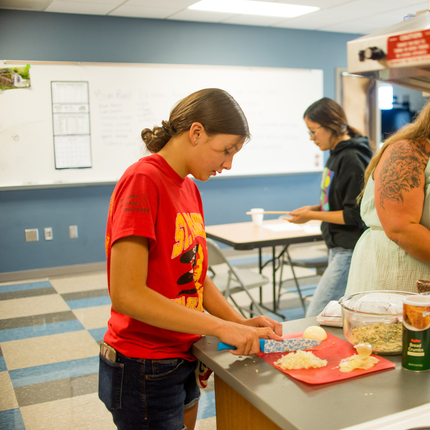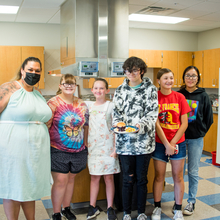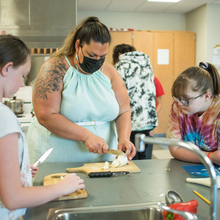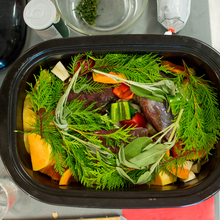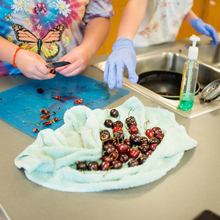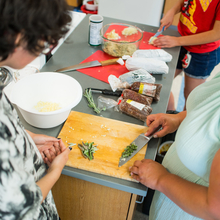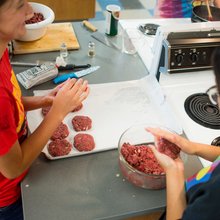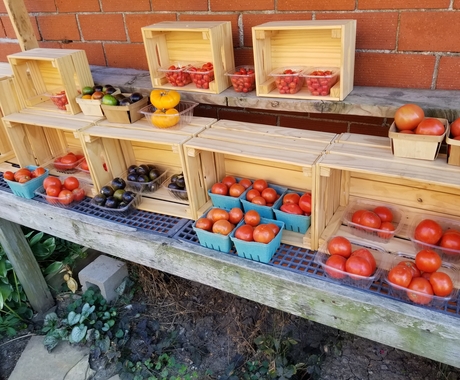Kristine Flyinghawk contributed to this blog.
Students with culinary aspirations had an opportunity to link food and culture in a week-long course this summer. Among sessions on kitchen safety, they prepared dishes featuring traditional Indigenous ingredients and flavors such as buffalo, elk, squash, and wild rice.
This relevant, yet historical, piece of Native American cuisine workshop was presented to eight middle and high school students from Santee and Niobrara, Nebraska, hosted in partnership with the Niobrara Culture Awareness Through Education (NCATE) program. Center for Rural Affairs Native Communities Manager Kristine Flyinghawk led the course, and NCATE advisor Tessa Avery helped develop it.
“This was an amazing opportunity to teach students how to use ingredients their ancestors had used and showcase them in a modern way,” Kristine said.
Over the week, students focused on different skills and recipes each day. On the first day, students worked on basic knife skills and kitchen safety skills, made cedar and mint tea, and prepped vegetables for Three Sisters Soup, which they cooked the next day. In the Native American recipe, “three sisters” refers to corn, beans, and squash. The second day’s agenda also included making maple-glazed butternut squash and wild rice.
The next day, students prepared buffalo pot roast, elk burgers with berry compote, and succotash. During their final class, students added hominy to the pot roast and prepared wild rice and berries.
“These students were able to learn some basic cooking skills while connecting with food and dishes that were grown and made by Indigenous ancestors,” Kristine said. “Students were also able to connect to the arts through the decorative presentation of the dishes as well as through the use of color from the foods selected and meals they created.”
Many of those who participated saw the course as an eye-opening experience and were excited that they got to go on a culinary adventure.
“I really enjoyed all of the historical and practical knowledge I gained during the course,” said Chelsea Valburg, a student participant. “Since the course, I’ve been utilizing many of the skills we learned on a regular basis.”
The photos below showcase examples of the new skills acquired by the students and their hard work throughout the course.
Photo 1: Summer school students from Niobrara Public Schools pose with instructor Kristine Flyinghawk, from the Center for Rural Affairs, while participating in the week-long Native American cuisine workshop. They learned the history of certain dishes, modern twists on traditional meals, and basics in the kitchen such as knife skills, safety, sanitation, and other techniques.
Photo 2: Middle and high school students practice knife skills with different root vegetables for the maple-glazed root vegetable dish.
Photo 3: Buffalo roast with squash and other vegetables was prepared by students, and plated using different textures and colors. Fresh sage and cedar are used for additional layers of flavor. Buffalo roast is very lean and low in cholesterol.
Photo 4: Students pit and dice fresh cherries to mix with raspberries and blueberries for a compote used to top elk burgers.
Photo 5: Students prep fresh sage to incorporate into the elk burgers. Sage cooks with a slightly bitter or musty flavor. Dried white sage is used for ceremonies and smudging as well.
Photo 6: Students form elk burgers to be pan fried after being combined with herbs.
Featured photos taken by Kylie Kai.

